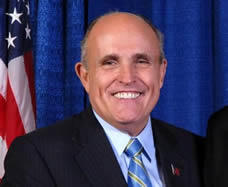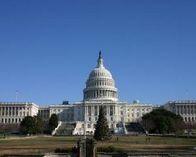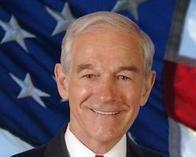The Two Races for President and the Race within the Race: A Commentary By Douglas Schoen
There are two underlying trends that have emerged when examining recent poll results.

There are two underlying trends that have emerged when examining recent poll results.

Sound familiar? A young, charismatic candidate campaigns calling for change and new directions. Defying the traditional prejudices that have kept his ilk out of the White House, his effortless good looks and measured cadence attract voters to his vision of new possibilities.

Mitt Romney’s strategy for winning the Republican nomination was to win the early states and build momentum. Rudy Giuliani’s plan was to accept defeats in the early states and come back strong on January 29 in Florida and in many large states on February 5.

Senator Barack Obama and former New York City Mayor Rudy Giuliani are now tied in the latest Rasmussen Reports telephone survey, with each drawing 43% of likely voters.

The latest Rasmussen Reports national telephone survey found that, if the Congressional Election were held today, 46% of American voters say they would vote for the Democrat in their district and 36% would opt for the Republican.

The issue of torture has again jumped to the fore with the revelation that in 2005 the Central Intelligence Agency destroyed videotapes of interrogations of terrorism suspects, some three years after the interrogations were conducted.

Huck-a-mania has not made its way to New Hampshire. The latest Rasmussen Reports telephone survey of the state shows former Massachusetts Governor Mitt Romney with 33% support and a fifteen point lead. That’s the third straight Rasmussen poll to show Romney leading by at least fifteen points in the Granite State.

Look at recent history. The Senate has changed party control six times: in 1980 (D to R), 1986 (R to D), 1994 (D to R), 2001 (R to D), 2002 (D to R), and 2006 (R to D).

The era of celebrity endorsements ended some time ago. We no longer buy the shaving cream that Derek Jeter tells us to use; nor do we vote as some Hollywood actor suggests.

In the race for the Democratic Presidential Nomination, New Hampshire has joined Iowa in the too close to call category.

The campaign of Congressman Ron Paul, the Texas libertarian and Republican, continues to generate prolific media coverage about its prolific fundraising, enthusiastic supporters, innovative Internet and other strategies, and its candidate's willingness to sharply differentiate himself from the GOP mainstream.

Despite all the hoopla and negative campaigning and Oprah, the Democratic race in Iowa remains pretty much the same as its been for the past month—way too close to call.

It was just two weeks ago that Rasmussen Reports released the first Iowa Caucus poll showing Mike Huckabee with an advantage over Mitt Romney.

Americans have lost confidence in their personal level of financial security, but it does not seem to have dampened their optimism about the year ahead. That's according to the survey for this month's COUNTRY Financial Security Index.

I have argued for the last couple of months that the Democratic primary race has been static, representing a strong, if not dominant position for Hillary Clinton.

Intangibles matter in campaigns and 26% of Americans believe that Hillary Clinton seems to be the most Presidential of the Democratic candidates.

Twenty-three percent (23%) now want the troops brought home immediately. That’s down three points from a week ago and five points from the week before.

This holiday season as friends and family gather to celebrate, 25% of American adults say they will avoid political discussions like the plague.

Former Massachusetts Governor Mitt Romney may have the "home state" advantage in Massachusetts, where he's lived only a few years.

In his home state of Arizona, a resurgent Senator John McCain is now toppling top Democratic opponents by 20%+ margins.